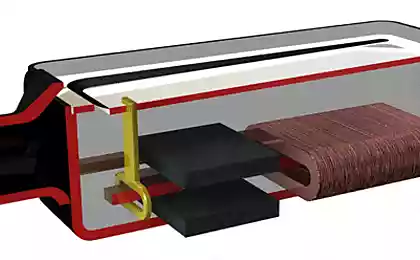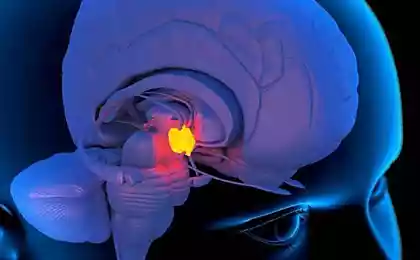450
Found a way to make an object invisible by manipulating light

фото:www.pavablog.com
Invisibility — like time travel, teleportation, levitation, and super-speed — is the subject of science fiction since its inception. Among the most famous examples of this is the invisibility, which was used by the Romulans in Star trek, Harry Potter using the cloak and Frodo to get to Mordor. Hundreds, if not thousands of references to invisibility found in books and movies. For many years, scientists have come up with interesting ways to hide objects from view, except that the process in these cases was far more complicated than science fiction shows.
Before we can talk about, so to speak, a scientific cloak, we need to understand the relationship between light and physical objects. Believe it or not, this attitude is quite simple. When we look at something-be it an Apple or a machine — what we see boils down to a wavelength of light that is reflected and absorbed by the object.
In the case of the Sun, for instance, its white color due to the fact that it absorbs all wavelengths of light. However, right off the bat, most people will say that the Sun is actually yellow (but it is quite another). Given this, it is useful to ask whether it is possible to do so, to hide the true color of the object or even make it invisible?
The answer is more interesting than it seems at first glance. Recently, French scientists announced that they found a way to manipulate light in such a way that a tiny opaque object is completely transparent to the human eye. Although it sounds simple, it is actually much more complicated.
How does it work?The technique used by scientists, based on quantum effects. Things like Rayleigh scattering, has taught us that particles of light live a turbulent life, and then when faced with it, and so the path through space-time. When they come into contact with molecules and other particles of matter, their components, that is, the photons bounce off in different directions at odd angles. Other difficulties arise when we add additional interacting atoms or molecules in the equation. In this environment, they are called quantum emitters, and they are extremely important for a promising field of quantum technologies.
When one light source is in contact with the other emitter, the light bounces and shows changes in the electromagnetic field, resulting in scattering of photons generating more complex wave patterns. Yet we must not forget about the dipole — or quantum emitters with a positive and negative side. This feature, which is a result of the fact that the emitter has uneven distribution of electrons, can have a serious effect on the electromagnetic field. The electromagnetic field of each radiator is important.
Ultimately, all this will often generate what is called a dipole-dipole interaction: a combination of things that intensively scatter light. And as studies have shown, this effect can be used to manipulate the reflection of light from the surface.

Quantum emitter (represented as the blue disk) interacts with the electromagnetic field. Physicists use the dipole-dipole interaction in such quantum emitters to make opaque objects transparent.
More specifically, the scientists used a new technique called DIET (dipole-induced electromagnetic transparency) to prevent the running lights from the surface and reflection of a specific wavelength, which essentially make the object transparent in the visible range.
"The importance of our work lies in the discovery that a very subtle phenomenon (the DIET) can be used to control light propagation in optically active media, — said co-author Eric Charron, Professor at the University of Paris in Orsay, France. — We showed how the light is scattered in the nanometer system, and this effect can be controlled to make an opaque object transparent at any given frequency".
What is the result?The whole point of the work that scientists need to repeat its success on the example of an object larger than two atoms in poperechniki (for reference, this number is very small when compared with the macro scales of the world in which we live). However, they are confident that not only will be able to do it with large objects, but also to deceive our eyes, not only to make the object invisible, but also having painted it in another color at all.
Their work also sheds light (literally) on the ways in which we can greatly slow down the light, or even freeze it. In the first case this is done by changing the path of photons due to the interaction of particles with the environment. The advantages of such a breakthrough are too numerous to list, but certainly — there is still a lot of work.
"Currently, our goal is to move to DIET in multilevel atomic or molecular system, says Charron. — Each emitter will behave as a series of oscillating dipoles, thus opening a number of Windows of transparency that will allow us to conduct a more flexible strategy [manipulation]".
Also scientists are studying methods of slow light based on their developments.
Source: hi-news.ru
Art Studio in the industrial style
Find out what is the difference between cheese that we eat, from the present























